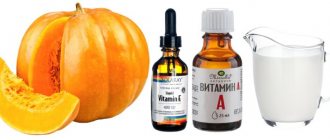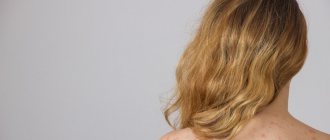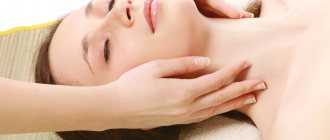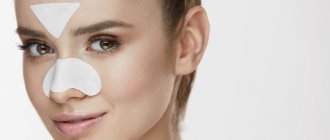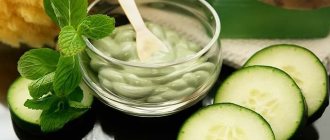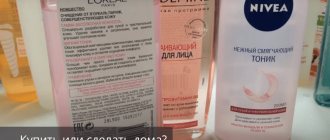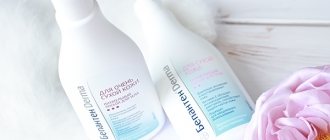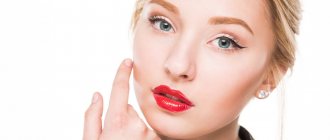Quick links:
- Common skin imperfections - from A to Z
- Acne
- Age spots
- Birthmarks
- Large pores
- Moles
- Scars
- Skin textures
- UV damage
- Dark circles under the eyes
- Warts
- Wrinkles
- Prices for removing skin defects
Common skin imperfections - from A to Z
A cosmetic dermatologist has the necessary qualifications and knowledge needed to effectively treat skin conditions.
Proper skin care will help keep it firm, smooth and healthy. Skin problems on the face and other areas of the body can be caused by age, exposure to environmental elements, and many other factors. Some common skin imperfections are the result of genetics, viruses, or other causes.
Acne
One of the most common facial skin problems for teens is acne, a troubling skin condition that can affect self-confidence and self-esteem. Once the sebaceous glands become overactive and begin to produce excess, the follicles become sealed. As a result, acne forms. These follicles can become inflamed, causing acne to become significantly larger. Although acne is not very harmful to health and usually goes away with time, moderate to severe acne may leave scars. There are several acne treatment options available that can effectively help patients and eliminate or reduce scarring.
Age spots
The appearance of brown pigment spots is due to age, or due to the influence of the sun or genes. They are sometimes called "liver spots." These benign growths resemble large freckles and usually appear on the face, neck, arms, or legs. Although they are not harmful, many people want to remove them for cosmetic reasons. A cosmetic dermatologist can effectively eliminate or reduce the appearance of age spots on the skin.
Birthmarks
Birthmarks are areas of pigmented skin that appear at birth or appear shortly after birth. They vary in color and shape. Some types of birthmarks are permanent, while others are temporary. Most birthmarks are harmless, although some can cause skin problems and require treatment. A cosmetic dermatologist can help diagnose different types of birthmarks and recommend the appropriate course of treatment.
Large pores
Pores are tiny holes in the surface of the skin through which moisturizing oils escape. When pores on the face become large enough to be noticeable, they can lead to skin problems. To some extent, pore size is hereditary, but larger pores also appear if they are clogged with oil and dead skin cells. A dermatologist can recommend effective treatments to improve the appearance and combat large pores.
Moles
Moles are typically raised or flat dark brown spots on the skin that appear at birth or over time. Most moles are harmless, but some can develop into skin cancer. Any mole that has an irregular edge, uneven color, or is larger than a pencil eraser should be examined by a dermatologist. Most moles are not cancerous, but they can present cosmetic problems to the skin, which is why many people want to have them removed.
Scars
A scar is an area of skin that has a different color or texture than the surrounding skin as a result of an injury. Scars are a cosmetic skin problem that does not require treatment. However, their presence can be unpleasant and spoil the appearance. Resurfacing and removal of unwanted scars can be done by a cosmetic dermatologist after appropriate consultation.
Skin textures
A wide range of skin conditions and environmental factors can make skin rough, uneven, wrinkled, dry and flaky. Typically, identifying the source of a skin problem is the first step to finding effective treatments. A dermatologist can examine your problem and provide effective treatment for most skin conditions.
UV damage
Long exposure to the sun is the most dangerous factor contributing to the appearance of visible signs of facial aging and other skin problems. Ultraviolet radiation can lead to uneven pigmentation, deep wrinkles and skin cancer. The best defense against this is to prevent exposure to the sun's ultraviolet rays by wearing sunscreen and protective clothing. A cosmetic dermatologist can help with effective treatments to minimize visible signs of UV damage and restore smooth, healthy skin.
Dark circles under the eyes
Darkened skin under the eyes is a common problem caused by factors such as heredity, lack of sleep, allergies, diet and sun. In many cases, darkened skin can be hidden by makeup. A cosmetic dermatologist can help with treatments that can reduce or eliminate dark circles under the eyes permanently.
Warts
Warts are benign growths caused by a virus. Although warts are typically raised and rough to the touch, they can appear in a variety of shapes and shades. Warts can appear on almost any part of the body and may not be noticeable. Although warts tend to disappear after some time, they cause discomfort and cosmetic imperfections, which often prompts patients to consider having their warts effectively removed by a cosmetic dermatologist. Removing warts is usually a painless process that can be done very quickly.
Wrinkles
Wrinkles and lines on the skin are one of the most common facial skin problems in men and women as they are caused by aging. Wrinkles appear where the skin naturally folds and become deeper over time. Sun exposure, smoking and extreme diets can accelerate this effect, making the skin look older than it is. A cosmetic dermatologist can help you select professional skin care products and perform a wide range of highly effective treatments to smooth and rejuvenate your skin.
Prices for removing skin defects:
Cosmetics for moles
Author Editorial Board Pravda.Ru
24.10.2003 08:49
Health » Beauty » Beauty techniques
Special camouflage cosmetics have appeared on Russian shelves, which skillfully hide even serious skin imperfections. What is she? The general director of the Moscow salon-store “Arte” Elena Vladimirovna Terekhova tells .
0 shared
— Products that can be used to hide skin imperfections are also found among ordinary decorative cosmetics. How do camouflage cosmetics differ from these drugs?
— Using conventional correctors, you can mask only minor skin problems - slight inflammation, redness. And cosmetic camouflage products are specifically designed to hide serious skin imperfections from prying eyes.
Such cosmetics can make birthmarks less noticeable, including hemangiomas, so-called port-wine stains, moles, vitiligo, burn marks, and varicose veins. Concealing scars caused by injury or surgery is also the responsibility of camouflage products. Moreover, cosmetics can be used already during the rehabilitation period, that is, when the scar is still forming.
The drugs give the problem area the color of healthy skin. For example, a port-wine stain becomes the same tone as the surrounding skin, and therefore ceases to be noticeable. Skin irregularities that usually accompany some kind of cosmetic defect - a scar, a birthmark - are not eliminated by makeup, but are slightly smoothed out.
Unfortunately, few people know about the existence of such cosmetics - after all, their choice on the Russian market is small. It is represented, for example, by the Dermacolor and Dermacolor Light lines from professional cosmetics Kryolan (made in Germany), the Dermablend brand from Corrective cosmetics (made in the USA).
— How long after surgery or injury can camouflage be used? Will cosmetics slow down tissue healing?
— Everyone’s tissues are restored at different speeds - here the general condition of the body is affected, as well as the depth and nature of the damage. Therefore, only a doctor who is observing you during the rehabilitation period can say exactly when to start using camouflage cosmetic products.
The general recommendations are as follows: you should not resort to cosmetics if the wounds are still open or have barely healed. But when the integrity of the skin has been restored, it’s time for camouflage. With its help, you can hide the unnatural color of the skin, which persists for a long time after the tissue has healed. For example, after surgery, a “young” scar has a reddish-bluish tint for some time. For some time, the skin resembles laser resurfacing with a burgundy coloration.
Cosmetics do not interfere with skin healing if the preparations are chosen correctly. During the recovery period, the skin is very sensitive and vulnerable, so only camouflage cosmetics, which combine both decorative and medical properties, are suitable for it. Such products not only hide skin imperfections, but also protect it from ultraviolet radiation to prevent age spots from appearing, moisturize, nourish, heal, and prevent inflammation. All these abilities of cosmetics must be indicated in the annotation to it.
— How comfortable and invisible is camouflage cosmetics on the skin?
— Camouflage foundations with a thick, creamy consistency are best used to hide serious skin imperfections. Of course, they are denser and heavier than ordinary decorative cosmetics. But they do not cause any unpleasant sensations, so there is no need to apply such preparations thickly or in several layers. The pigment, that is, the coloring matter, is contained in high concentrations. Therefore, rich color and good concealing coverage are obtained after applying a thin layer of cosmetics.
In addition, foundations are usually very durable - due to the fact that they are fat-free and are based on microcrystalline wax. This also makes cosmetics comfortable - you don’t have to worry about skin imperfections suddenly becoming noticeable. How invisible is camouflage makeup? It all depends on how skillfully the cosmetics are applied. But upon closer examination, you can still understand that there is makeup on the face. But this is not a rough mask, but neat makeup. On the skin of the body, concealers are usually less noticeable - simply because we least expect to see them on the lower leg or forearm.
— What concealers should you have to best hide skin imperfections?
- To correct any of the listed problems, you need 3 products - a camouflage preparation, which is applied directly to the skin blemish, foundation and loose powder. In professional lines, tones can be presented that combine the functions of a camouflage preparation and foundation.
Color correctors - yellowish or greenish - or natural color correctors - from light brown to dark brown - are used topically. Color correctors are necessary in cases where you need to hide imperfections of a reddish or bluish tint. Natural color correctors are needed if the unwanted fragment is whiter or, conversely, darker than the skin.
The foundation serves to finally match the shade of the camouflaged area with the overall skin tone. Cosmetics manufacturers offer a wide range of foundation shades - from light beige to deep brown. The foundation is applied both to the camouflaged area and to the surrounding skin. If you work on the face, then on the entire face; if on the shoulder, then on the entire décolleté area. Foundations are divided into those intended for the face and those used for the body. Loose powder is then applied to set the makeup.
— How not to make a mistake with the shade of cosmetics? After all, the correct color of the drug is the key to successful camouflage.
— Let's start with “local” funds. If you need to tame redness—to hide spider veins or hemangioma—choose a corrector with a greenish tint. And to eliminate blueness - a postoperative hematoma or scar - you will need a yellowish one. Green dims red, and yellow dims blue. Therefore, after applying the corrector, the skin color approaches its natural beige. If the defect is distinguished by its whiteness - vitiligo spots or a whitish scar - you will need a “local” foundation several shades darker than the skin.
If you need to hide a black or brown fragment - a birthmark or an unwanted tattoo - you need to apply a foundation lighter than your skin to it. And the darker the skin imperfection, the whiter and denser the tone should be.
Choosing a foundation is not an easy task. Therefore, to begin with, it is better to purchase mini palettes. In them, the foundation is presented in several shades (up to 16). Using a palette at home, taking your time, makes it easier to choose the right color. If none of the tones gives the ideal effect, you can mix several shades: this technique gives countless tones. When you choose the right tone, you can purchase it in a separate, larger package.
Now about the foundation. When choosing it, apply a little cream to your face. If the camouflage object is on the body, the foundation is tried on healthy skin near the blemish. When selecting loose powder, apply it over a test smear of foundation.
— Reveal the secrets of applying camouflage makeup?
— Before applying any cosmetics, including camouflage, it is necessary to cleanse the skin. Cosmetic milk is suitable for dry and normal skin. It is advisable to clean oily skin with a lotion with a low alcohol content of 3-5%. This product degreases well. But sebum is a threat to the durability of cosmetics.
Then “local” camouflage agents are applied directly to the skin defect. They can be applied with your fingertips or a brush. If the skin on the problem area is stretched or damaged, then when applying the drug, it is better to replace stroking movements with driving ones.
Now it’s time for the main foundation. It is also applied with fingertips. If small defects are located close to each other and you need to treat a large surface of the skin at once, it is better to use a sponge.
After the tone, powder is used. It is applied with a cotton puff with blotting movements, and the excess is shaken off with a brush. Then you can use ordinary decorative cosmetics - blush, mascara, eye shadow, lipstick.
— You mentioned that this cosmetics is very long-lasting. Will it withstand prolonged swimming or the hot steam of a sauna?
— If you supplement the products listed above with special preparations, then neither water, nor heat, nor steam will harm your makeup.
For example, Kryolan's sealer coats the skin with a waterproof film. This product is used after loose powder. It is sprayed from a distance of 30 cm from the skin. If you are applying cosmetics to your face, first protect your hair with a scarf, close your eyes and place cotton pads on your eyelashes. Otherwise, the hairs may stick together.
You can also enhance the durability of cosmetics with a special emulsion - a base. It is applied after cleansing the skin. The base does not protect cosmetics from water - it prevents products from the sebaceous and sweat glands from spoiling the makeup. The base is primarily necessary for those with oily skin. Foundation applied to the base is more durable and does not “flow” for a long time. It’s worth resorting to a base if you have a day ahead of you during which you need to look impeccable, but there is no time to touch up your makeup. Hot weather, vigorous dancing or sports activities are also indications for using the basic product.
— How to properly remove long-lasting makeup? Can I use it every day?
— To remove makeup, it is better to use a cleanser from the manufacturer of the camouflage cosmetics you use. The cleanser is applied to the skin and massaged with fingertips in a circular motion to gradually dissolve the cosmetics. Then remove makeup with a cotton swab or napkin, wipe your face with toner and apply nourishing cream.
As for daily use, it is, of course, possible if necessary. But if you don’t have any important events planned, it’s better to give your skin a rest. On this day, you can use lighter camouflage products: not thick creamy ones, but, for example, a lighter liquid consistency - fluid. Camouflage cosmetics companies offer such lightweight preparations. True, they hide problems worse, but they are practically not felt on the skin. You can remove them with a regular makeup remover.
Serious skin imperfections are best hidden by foundations with a thick, creamy consistency.
Ekaterina KOVALEVA “Women’s health”
Discuss
Environment themes
How to properly hide skin defects and mask imperfections
We all know that ideal facial skin is a rather rare phenomenon, since acne and various types of inflammation appear periodically in everyone. Therefore, in order to give the skin an even tone and fresh color, as well as hide all imperfections, women have to spend a long time in front of the mirror.
Here are some tips and recommendations that will help you properly disguise defects and restore order to your skin.
To begin with, it should be noted that skin problems should be hidden with the help of cosmetics only in special cases , since frequent masking can lead to even greater problems. Cosmetic products intended for these purposes often do not have an anti-inflammatory or healing effect; they simply hide imperfections.
Most concealers are made with oils, which can clog pores, which can also worsen the appearance of acne. Therefore, all inflammations and skin diseases must be treated by contacting dermatologists .
So, let's try to figure out how to mask minor defects and imperfections of the skin, and what is not advisable to do.
Extensive areas of redness on the face
Often in such cases, girls simply apply a thick, thick concealer. You shouldn't do that. It is better to use a green-colored corrective base.
After further applying the foundation, your face will look much more natural than if it were almost completely covered with a layer of concealer.
Hiding dark circles under the eyes
Wrong decision
: Apply concealer that is too light.
Correct solution
: Use a peach-colored concealer. If you want to disguise very dark bruises, it is better not to overuse a light-colored concealer - otherwise white circles will appear around your eyes, which will definitely not beautify you. Meanwhile, warm-toned concealers are great for neutralizing blue under-eyes.
Masking individual pimples or inflammations
You should not try to hide the bulge that appears with a thick layer of foundation. Use a concealer that best matches your skin tone and has a yellowish tint to help neutralize redness first. Using a brush, apply the product pointwise and in a thin layer, because a thick layer will only emphasize the unevenness of the skin texture.
Removing bags and swelling under the eyes
Try a concealer 1-2 shades darker than your skin tone. Thanks to the optical effect, a light concealer will only make the puffiness under the eyes even more voluminous, while a dark one will help to shade the protruding area. The same rule works here as when adjusting the shape of the face - we darken everything that we want to hide.
In particularly advanced cases, you can enhance the effect with a light corrector. It should not be applied to the problem area, as this will make it stand out even more. Apply at the border of the tumor and the cheek.
Masking wrinkles around the eyes and in the nasolabial area
Here, you also shouldn’t immediately apply a thick and dense concealer. Use a brightening highlighter first. The reflective effect will “work” in this case much better than a large layer of concealer, which will instantly fill in wrinkles, emphasizing them.
A few more tips for disguising skin imperfections:
Use correctors of different colors:
- Flesh color is a universal color;
- Yellow – masks dark circles under the eyes well;
- Green – hides broken red capillaries and red pimples well;
- Purple – suitable for disguising age spots and freckles;
- Pink – revitalizes gray facial skin.
To quickly figure out what each color is for, just take a look at this diagram. Choose the color of the defect and see along the line what shade to disguise it with:
How to apply correctors?
It is best to use a flat synthetic fiber brush. You can apply with your finger - especially under the eyes, where it is important to apply the cosmetic product gently, without stretching.
For each problem you need to select your own corrector. There is no one-size-fits-all solution for all occasions!
- Dark circles under the eyes - can be removed using light flesh-colored or yellow correctors, gently applying with the pad of the ring finger;
- Broken capillaries, red pimples - our problem will disappear under a layer of green corrector;
- Pigment spots, freckles, bruises - achieve the best effect with a pink or purple corrector;
- Tired and gray facial skin - a corrector or foundation in pink or peach tones will help revive your face;
- Scars, tattoos - in this case it is necessary to apply a foundation or concealer with a thick consistency and strong pigment; even a small amount has great masking power. If the scar is convex, we cover it with a darker shade, and if it is concave, we cover it with a lighter shade than the color of the makeup base, thereby visually balancing it.
Source: https://MakeUpim.ru/page/skryvaem-defekty-i-nedostatki-kozhi-pravilno
Defects, imperfections and imperfections of the skin - treatment
There are many skin defects and each of them indicates certain processes occurring in the body. They are difficult to come to terms with, because they can not only disrupt a normal, fulfilling life, but also lead to discomfort and psycho-emotional problems.
Causes of defects
Human skin is a very complex system that performs thermoregulatory, excretory, receptor, immune and regulatory functions. It interacts closely with internal systems and reacts to the environment.
By the appearance of the skin you can objectively judge the general condition of the body. Undoubtedly, it also performs an aesthetic function.
To a greater extent, its defects are associated with diseases or precede them. Acquired deficiencies arise from both external and internal causes. The first include mechanical, thermal and chemical factors. This is how keratinization, pigmentation, expansion of vascular walls, dryness, burns and peeling appear.
Types of defects
Skin imperfections have different etiologies, and this determines one or another method of elimination.
Warts
The vast majority of skin growths are benign and do not pose a threat to health. In open areas they become cosmetic defects and, as they grow, cause discomfort.
Several types of warts can form on the human body:
- Ordinary - dense keratinized papule from 0.1 to 10 mm. Localized on the dorsal surfaces of the hands and feet.
- Condyloma acuminata is a soft, papillary growth on a pedicle. Formed mainly on the genitals.
- Flat (juvenile) - a limited, smooth, round or irregular papule of light brown, pink or flesh color. It most often occurs in children and adolescents and is located in groups on the hands or face.
- Plantar warts occur in areas of pressure or constant friction. Over time, it turns from small and shiny into a yellow-gray plaque with a rough, rough surface. The growth is painful, interferes with walking and can cause temporary disability.
- Senile (keratoma) is a flat, small spot or papule, “stuck” to the skin, with clear boundaries, a warty surface, pink or yellow color. Over time it turns brown.
Removal of all types of warts is carried out using physical (cryodesurgement, electrocoagulation, laser excision) or chemical methods (trichlorocustic and nitric acid, condiline, solcoderm). Due to the viral nature of the disease, none of the methods provides complete recovery. Relapses occur in 65% of cases.
Cuperosis
Skin imperfections in the form of unsightly vessels on the face (red or blue veins) along the back and wings of the nose, on the cheeks and chin occur with a combination of unfavorable internal and external factors.
The first include disorders of systems and organs: gastrointestinal and female diseases, hormonal disorders and chronic pathologies of the nasopharynx.
Physical factors play an important role: prolonged exposure to cold, sun, wind.
Modern cosmetology uses laser correction to remove spider veins - a painless and effective procedure that does not leave wounds or scars.
The possibility of relapse remains if therapeutic and preventive measures are not taken in time: vascular-strengthening drugs, vitamins, home skin care using protective and moisturizing agents.
Acne
Multiple acne occurs in the presence of pathogenic bacteria and with weak body resistance, the causes of which can be hormonal, vascular and metabolic disorders.
The disease manifests itself in the form of superficial or deep inflammation that affects all cells of the sebaceous gland. The rashes are localized on the face, chest, back and shoulders.
Types of acne and their clinical picture:
- Black comedones are pores clogged with sebum, dust and epithelial particles.
- White (grass, milia) - small tubercles no more than 2 mm, painless and dense.
- Necrotic (Beck's acne) - pink and purplish-red skin elements, in the center of which foci of necrosis form. After resolution, they dry out and turn into bloody black crusts. Over time, the elements fall off, and in their place remains a depressed, white-pink scar.
- Spherical (conglobate). A severe form of the disease with a long course and frequent relapses, in which individual ones merge and form dense purple-blue spherical infiltrates. After opening them, purulent fluid comes to the surface, and dense scars form in place.
Hardware and drug therapy for acne is indicated for single skin lesions. In other cases, a full examination, identification and sanitation of chronic sources of infection, and diet are carried out.
Scarring
Scars are formed as a result of a violation of the integrity of the skin after injury, surgery, or burn. They are formed from connective tissue in order to close the resulting epidermal damage. The process occurs in several stages:
- The epithelization period lasts 10 days. By the end of this time, swelling and inflammation decrease and granulation begins.
- The stage of formation of a young scar occurs on the 11th day and lasts about a month. At the site of injury, young, loose and bright tissue is formed from elastin and collagen.
- During the maturity stage, the blood supply decreases. The scar turns pale and thickens due to the further growth of collagen and elastane. The process lasts about two months, and with repeated injury it can transform into a keloid or hypertrophic scar.
- The stage of final transformation occurs at the end of the 8th month. In a mature scar, the vessels die completely. It becomes unnoticeable and thin.
Scars are unpredictable. If the process of regeneration of the defect occurs physiologically, then over time the scar shrinks and turns pale. But under unfavorable conditions, it becomes purple in color and does not decrease. In this case, they resort to dermabrasion, laser resurfacing, and chemical peeling.
Keloid scars that protrude above the surrounding skin and have sharp boundaries are difficult to correct.
Seborrhea
The cause of the pathological condition is excessive production of sebum and a change in its chemical composition. Hereditary factors, diseases of the nervous, endocrine and reproductive systems predispose to the development of this type of dermatitis.
Seborrhea can develop on any part of the body, but most often it affects the nasolabial folds, external auditory canals, shoulders, back, and groin area.
Dermatitis manifests itself as rashes in the form of red papules and is accompanied by itching, peeling, and burning. They merge into ring-shaped or garland-like plaques with clear boundaries and are covered with fat, yellow scales. As the disease progresses, crusts form and become infected.
Seborrhea of the scalp is similar in appearance to dandruff, but it is itchy and the lesion is clearly visible.
Modern medicine and pharmacology cannot yet offer a drug that regulates the production of sebaceous glands, so only symptomatic therapy is prescribed: antifungal agents, antifungal shampoos, cleansing and disinfecting lotions, creams based on sodium hyaluronate and zinc pyrithione.
Patients with seborrhea are advised to eat a diet limited in salt, sugar, fat and alcohol.
If the causes of the disease are eliminated and symptomatic treatment is carried out in full, the prognosis for recovery is favorable.
Hypertrichosis
Excessive hair on the face and body is considered not only one of the serious cosmetic flaws. In women, it serves as a reason for the development of complexes and other psychological problems.
Causes of hypertrichosis:
- Disorders of the endocrine glands.
- Long-term use of anabolic drugs.
- Hereditary and constitutional (ethnic) predisposition.
After examination and determination of the true cause of the defect, comprehensive treatment is prescribed. It includes oral medications and cosmetic procedures.
Methods:
- For mild hypertrichosis, bleaching with hydrogen peroxide is effective.
- Depilation is removal without a hair follicle using a machine or special chemicals. It is considered one of the inexpensive and accessible methods, but with significant drawbacks: the procedure must be carried out regularly, and lotions and gels can only be used in small areas.
- Epilation is the removal of hair along with the bulb using a special device (epilator), tweezers, or wax. Beauty salons also carry out electrolysis and laser treatments.
Successful treatment of hypertrichosis is impossible without the use of drugs that inhibit the production of androgens: combined oral contraceptives in combination with Spironolactone, Ketoconazole, Finasteride. The effect of drug therapy occurs around the end of the fourth month: the growth of new hair completely stops, and existing hair is removed using cosmetic procedures.
Age-related disadvantages
Facial skin defects in the form of wrinkles and sagging are inevitable over the years. Being part of the body, the skin reacts and reflects the ongoing biochemical processes in the nervous, endocrine, and immune systems. From the age of 25, the production of collagen, the protein of strength and elasticity, gradually decreases, and from the age of 30 it decreases by 1% annually.
The main signs of wilting:
- color change;
- areas of pigmentation;
- increase in the number and depth of wrinkles;
- loss of oval clarity;
- deepening of the nasolabial fold;
- expansion of capillary vessels;
- atrophy of fatty tissue;
- thickening of the stratum corneum.
Skin aging is an individual process. It depends on the constitution, the activity of the sebaceous glands, the shape of the face and the general condition of the body.
Fading of the “tired” type occurs in people of average build with normal or combination skin, diamond-shaped or oval faces.
Signs of aging:
- grayish tint;
- decreased turgor;
- drooping corners of the mouth and eyes;
- deepening of the nasolabial fold;
- mild swelling;
- inelasticity, “testiness” when pressed.
“Tired” skin looks better and fresher in the morning, and by the evening it becomes “sad, sad.”
This type of aging is considered the most favorable: the skin responds well to procedures.
Withering of the finely wrinkled “baked apple” type occurs in thin women with dry skin and a small subcutaneous fat layer.
Signs of aging:
- Dehydration, dryness, tightness.
- Many small wrinkles around the mouth, eyes and deep ones on the forehead.
The advantages of this type include the absence of ptosis (sagging) due to the small number of fat cells.
Deformational withering of the “bulldog cheeks” type occurs in women with a full face with combination or oily skin. Their subcutaneous fat layer is well developed, and for this reason the risk of venous insufficiency, hyperemia and rosacea increases.
Signs of wilting:
- The facial contour has “slipped” down.
- Jowls (drooping skin) above the lower jaw, on the neck.
- Double chin.
- Swelling of the eyelids, bags under the eyes.
- “Marionette lines” are folds that run from the corners of the mouth to the bottom of the chin.
Withering of the “muscular” type occurs in women with Asian appearance: their facial muscles are well developed, there is little subcutaneous fat, and this allows them to look young for many years. Withering with this type is rapid. It occurs within two years due to weakening of the muscles: creases, deep wrinkles, and sagging skin over the upper eyelids appear.
Modern cosmetology offers individual programs for each type to remove defects and rejuvenate from the inside. List of effective and popular procedures for fading:
- Injection mesotherapy with hyaluronic acid, vitamins and plant extracts.
- Laser and ultrasonic peeling.
- Modeling masks for a lifting effect.
- Vacuum massage.
- Botulinum toxin injections.
- Photo procedures.
- Cryotherapy.
Women over 40 years old need annual consultations with a cosmetologist. The specialist will monitor the changes that have occurred and select procedures and products.
Modern cosmetology and aesthetic medicine can remove or make invisible any, even the most complex, skin imperfections.
Source: https://papilloma03.ru/defekty-nedostatki-i-nesovershenstva-kozhi.html
Every problem has its own cosmetic solution
Of course, carefully concealing imperfections is not the solution for everyday makeup. Problems must be dealt with comprehensively: taking proper care of the skin, treating acne and acne in a timely manner, removing blackheads, narrowing enlarged pores, and preventing the appearance of age spots. But sometimes acne and other defects appear unexpectedly. In such cases, you need to act by correctly selecting and using corrective agents according to the type of deficiency.
- Pimples, inflammation, blackheads, acne
For such rashes, it is necessary to apply the corrector with precise movements. Shading is required. The ideal choice for masking acne would be creamy products or corrector sticks. You can use colored products; green color neutralizes acne. It is advisable that salicylic acid be present in corrective cosmetics - it will dry out rashes and inflammation.
- Freckles, age spots
